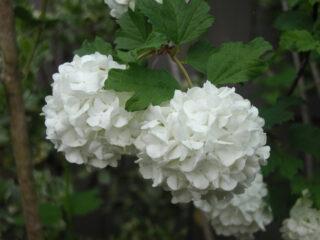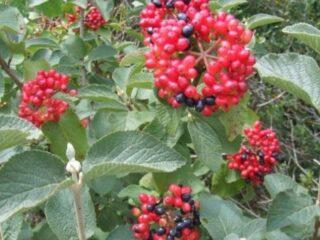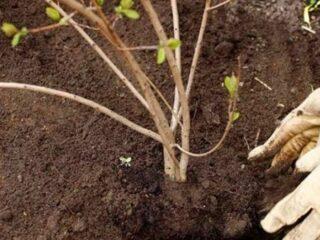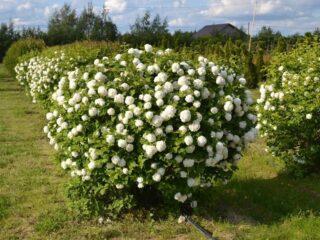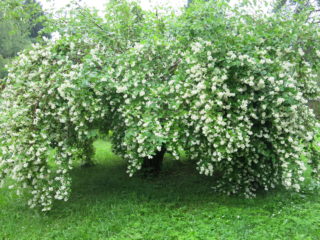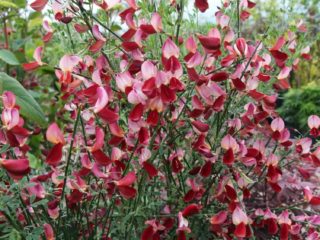Content
Kalina Buldenezh (Viburnum Boule de Neige) is the result of the work of French breeders. At the time of flowering, the bush strikes the imagination with its beauty and elegance, which has become the reason for the enormous popularity of the plant. Many gardeners are interested in how the Buldenezh viburnum can be propagated, since it does not form seeds and does not occur in the wild.
Optimal timing
Since the seed method is not available for reproduction of Buldenezh viburnum, only vegetative methods are used - cuttings, layering, dividing the bush. Each of them is used at a specific time of the year. According to the advice of professionals, in April and May, to obtain new plants, layering is done, cuttings are done in spring or summer, and in autumn, reproduction is carried out by dividing the bush.
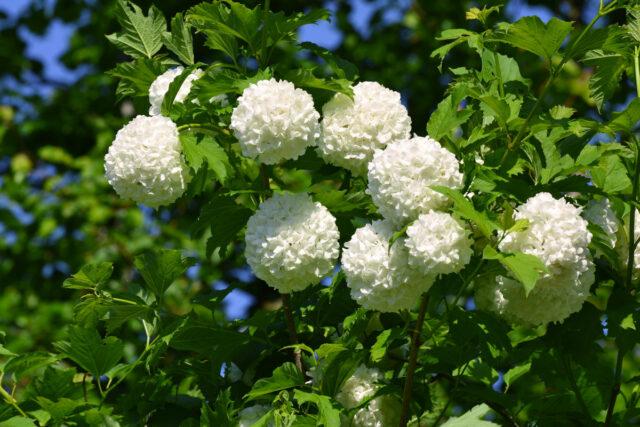
Translated from French Buldenezh means "snow globe"
How can you propagate Kalina Buldenezh
As a result of selection work, a sterile form of viburnum was created, which does not pollinate, does not form berries and seeds. The easiest way to reproduce viburnum Buldenezh is by layering. It does not injure the mother plant, it does not take much time. An adult seedling with a well-developed root system is obtained in the fall or next spring.
Cutting is a more laborious breeding process that requires adherence to the terms, rules and conditions of rooting. Planting material for this method is harvested specifically or obtained after formative pruning of the bushes. It will take two to three years to grow a full-fledged seedling.
Reproduction of viburnum Buldenezh by dividing the bush is the most traumatic and laborious way. It does not give a 100% guarantee of survival rate, the plants are difficult to tolerate transplantation.
If, in the process of growing a shrub near the base, a growth has formed, it can be carefully dug up and transplanted to a new place. Reproduction by shoots gives a good result only if the root system is sufficiently developed and not disturbed during transplantation.
How to propagate Kalina buldenezh by cuttings in spring, summer
Despite the fact that cuttings are the most time-consuming of all methods of propagation of viburnum, it is used more often than others. For this purpose, different planting material is used - green or lignified cuttings.
How to cut Kalina buldenezh in summer, spring
To obtain new seedlings, you need to choose high-quality planting material. Use lignified or green cuttings. The first is received in the spring, the second - in the summer.
For the propagation of the decorative viburnum Buldenezh with lignified cuttings in late April - early May, parts of branches up to 10 cm long with bark are cut. It should be intact, even, without signs of illness, damage or breakage. The presence of rot or white bloom is unacceptable. Cuttings are cut so that each of them has two internodes.
In the summer, they carry out a planned pruning of the bushes in order to form the crown. It is during this period that green cuttings are harvested for reproduction. They are taken from shoots that are no more than a year old. Choose only healthy, undamaged, without signs of wilting and drying of the foliage.
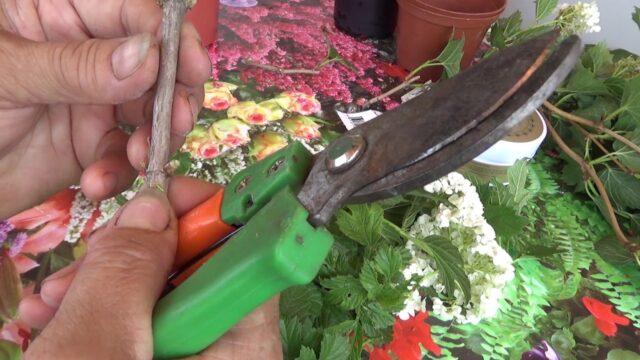
Above the upper internode, the cut is made diagonally, and under the lower internode, straight
How to root cuttings of viburnum buldenezh
In order to accelerate root formation, cuttings of Buldenezh viburnum are immersed in water with the addition of heteroauxin (100 mg per 1 liter) and kept in a growth stimulator solution for 6 to 10 hours.
For planting cuttings, a substrate is prepared, consisting of three components (sand, humus and sod land), taken in a ratio of 1: 1: 2. All components are thoroughly mixed and filled with soil mixture in pots or containers at least 10 cm deep.
Cuttings can be planted in open ground, having previously prepared a site for this. It is freed from debris, dug up, all the necessary components are added to the soil, and the surface is leveled. Planting material for propagation is planted in a row at intervals of 15 cm or one at a time in a container. The cuttings are buried in the soil up to the first bud at an angle of 60⁰. The soil is slightly compacted, watered. In the fall, after rooting, the seedlings are transferred to a permanent place.
In summer green cuttings, the lower leaves are removed before planting, and the rest are shortened by half. For the winter, they are reliably covered with spruce branches and foliage, and with the onset of spring they are transplanted to a permanent place.
To get acquainted in more detail with how the cuttings of Buldenezh viburnum are carried out in the summer, the video will help:
Planting cuttings of viburnum buldenezh in open ground
Before planting the seedlings of Buldenezh viburnum, it is necessary to prepare an appropriate place for them. The shrub does not like intense lighting throughout the day. The fall of direct sunlight on the foliage ends with their twisting and drying. Too shaded a place leads to a reduction in flowering time and elongation of shoots. Kalina Buldenezh feels great near a reservoir, in a light, lace penumbra. The soil should be breathable, loose, without stagnant water and waterloggedness. The optimal composition is loam or sandy loam with an acidity of 6 units.
If the soil is not fertile enough, add peat, compost, humus and mineral fertilizers. You can mix 500 g of wood ash, 200 g of nitrophoska and three buckets of humus.
For planting viburnum cuttings Buldenezh act according to the scheme:
- Wells are made, the volume of which is twice the size of the earthen coma of the rooted plant.
- Drainage from crushed stone, broken brick and expanded clay is laid at the bottom.
- Pour the previously prepared soil mixture on top.
- The seedling is placed in the center of the pit, its roots are straightened.
- The hole is completely covered with soil.
- A roller is formed around the perimeter.
- Water abundantly with warm, settled water.
- The surface is mulched with foliage, bark and peat.
It is very easy to breed Kalina Buldenezh with cuttings if you fulfill all the conditions and requirements for planting. Already in the next season, the shrub begins to vegetate and bloom quickly.
Follow-up care
Further care of Buldenezh viburnum seedlings, obtained by one of the propagation methods, consists in watering, timely feeding, pruning, protection from diseases and pests. After propagation by cuttings and obtaining new plants, each of them requires regular watering. Water consumption is 30-40 liters for an adult bush and about 15 liters for a young one.
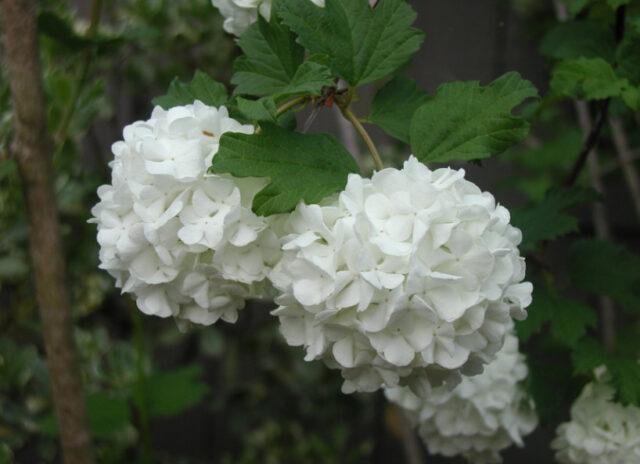
In the fall, water-charging irrigation is carried out in order to prevent the roots from freezing in winter
Top dressing is carried out in the summer until the second decade of August. Organics and potassium-phosphorus fertilizers are introduced. Annual pruning is done after flowering. The bushes give a well-groomed look, forming a crown. In the fall, it is thinned out, damaged and diseased shoots are removed. In the spring, when plants are attacked by leaf beetles, bark beetles, moths, aphids and cruciferous fleas, the crown is treated with an insecticide solution or ash infusion with the addition of laundry soap.
Reproduction of viburnum buldenezh by layering
Kalina Buldenezh reproduces not only by cuttings, but also by layering. The method is used in the spring, before flowering. They act according to the algorithm:
- A small hole is dug near the bush.
- Fill it with humus, add nitrogen fertilizer.
- Choose a long escape.
- Put it in the prepared hole.
- Fix with staples.
- Fall asleep with soil, lightly tamp.
- Water abundantly.
After two years, the cuttings give good growth. At this point, it is separated from the mother plant, dug up and transplanted.
Reproduction by layering gives a high survival rate, does not require special care, the plant receives nutrients from the main bush.
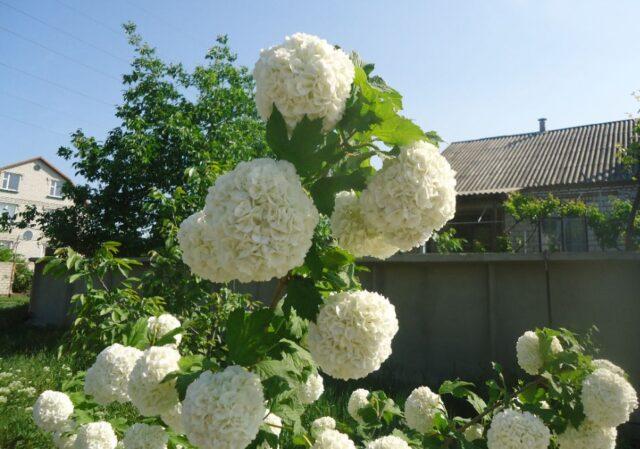
The plant will bloom for the first time after two to three years.
Reproduction by dividing the bush
One of the easiest ways to reproduce viburnum Buldenezh is to divide the bush. Several full-fledged seedlings can be obtained from one mother plant. This method of reproduction is used for viburnum, which is at least five years old, its root system is developed, the crown is without signs of disease.
The division is carried out in early spring or late autumn. Carefully dig up, shake off or wash off the soil from the roots with water. After examination, they decide into how many parts the mother bush should be divided into. They are guided by the rule - each of the "divisions" must contain developed roots, several shoots and live buds. If it is impossible to divide into parts by hand, use a knife, pruner or shovel. To prevent decay, the cut sites are treated with charcoal or activated charcoal, after which new plants are planted in prepared pits in compliance with all the rules. During the week, you should take care of their shading so as not to get burned.
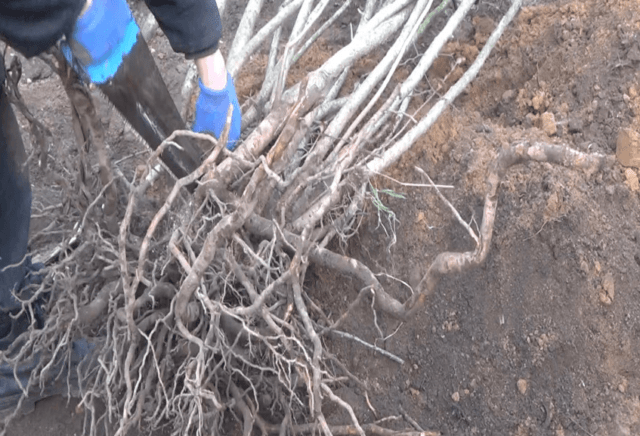
Reproduction by dividing the bush should not be used if the mother plant is very large
Recommendations and common mistakes
In order for the reproduction of viburnum to give the expected result, it is worth listening to some advice from professionals:
- Adequate illumination of the viburnum ensures its abundant flowering.
- Heavy soil should be thinned with sand or peat.
- At the end of flowering, not only dry and damaged shoots are removed, but also wilted inflorescences.
- To enhance bud formation, carbamide granules are introduced into the soil.
- When propagating by layering, shallow cuts are made on the bark of each of them to accelerate root formation.
- For a more lush flowering next year, a fresh growth is pinched in July.
Very often, gardeners follow all the rules for breeding viburnum, but years pass, and it does not bloom. The reason may be excessive deepening of the root collar, excessive moisture, too strong lighting or shading of the crown, fungal infections and a deficiency of macronutrients. After eliminating these reasons, the viburnum Buldenezh begins to bloom profusely every year.
Conclusion
To get many beautiful plants, you can propagate the Buldenezh viburnum in one of the suggested vegetative ways. They are easy to execute, with strict adherence to the rules, they give a good result. With the help of new seedlings, in just a couple of years, the garden changes beyond recognition, it looks more comfortable and spectacular.
